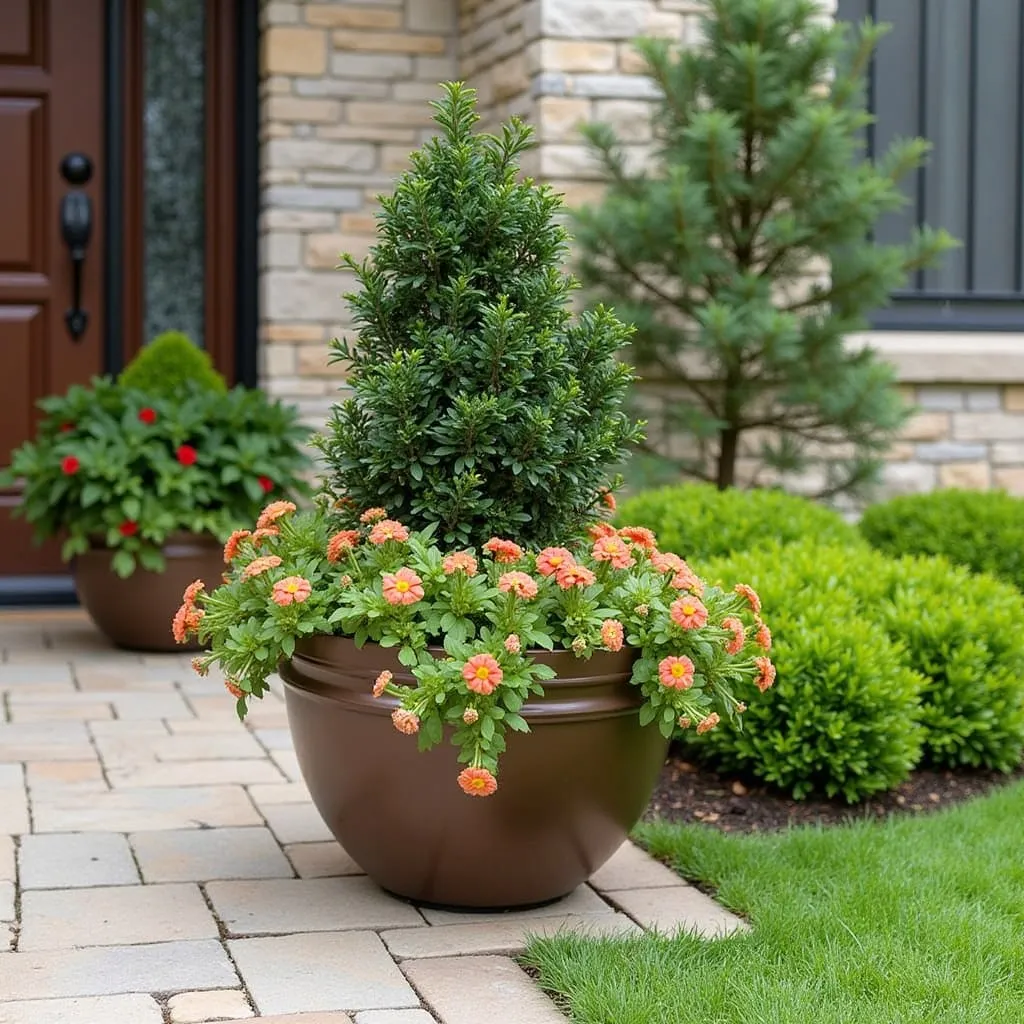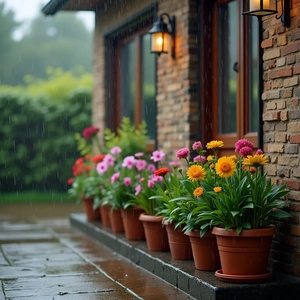
Entrance planters set the tone for both garden and home of yours, thus creating an immediate visual impact. However, not everyone has the time or inclination for high-maintenance greenery. Yet thankfully, many low-maintenance plants retain their appeal with minimal effort. Below, we’ll explore the best options for front garden planters. And what to avoid.
The Key Rules, Aspects, And Shadows for Choosing Low-Maintenance Plants
The golden rule for planter plants is selecting drought-resistant, undemanding species. Succulents, like sedum or echeveria are ideal, thriving in bright sunlight with infrequent watering.
But the weather resistance is equally crucial, as front gardens often face wind and sun exposure. That said, one might want to consider heat-resistant purslane, which blooms vibrantly, or shade-tolerant begonia semperflorens for sheltered spots – it flourishes in partial shade with prolific flowers.
A Quick Reminder on Some Hacks
The actual truth is that no single plant excels in every condition. So, prioritise these traits when selecting:
- Opt for healthy, young plants that won’t need immediate repotting, such as florariums with cacti. If buying online, scrutinise photos. Avoid specimens with dry leaf tips, elongated succulent stems, or dark spots. Remember that even hardy plants need basic care, so inspect them weekly.
- To keep planters looking pristine with little effort, use mulch – pebbles or bark. This reduces moisture evaporation while enhancing aesthetics.
- Pick species with low water needs – ornamental grasses, for instance – blue fescue retains its shape and colour through dry spells with almost no attention.
- For year-round appeal, combine perennials and annuals. Lavender paired with vibrant marigolds creates a striking contrast. Similarly, coleus and cineraria work well – the former offers vivid foliage, the latter a silvery hue, both requiring little upkeep.

Tips for Front Garden Design
Now, let’s briefly cover essential front garden dos and don’ts.
Preparing The Site
Assess the terrain first: note sunlit, shaded, and problem areas. Level uneven ground, install drainage, and ensure water access. Complete all groundwork early to avoid wrongdoings later.
Planning, More Planning
Design the garden as a cohesive whole, not in fragments. Sketch zones to harmonise plant distribution and streamline logistics.
Fill The Space Properly
Avoid bare patches (if any) – temporarily vacant spots can be sown with lawn seed or wild grasses.
Lawn As a Base
A neat lawn anchors landscape design. For low maintenance, opt for meadow grasses, as they need only biannual mowing and occasional watering.
Naturalness Over Strict Forms
Replace rigid flowerbeds with fluid plant transitions. Alpine rockeries add depth and movement.
Harmony With the House
Match the garden to your home’s style. For example, minimalist architecture suits geometric layouts, while some Scandinavian homes pair well with conifers, wild grasses, and natural water features.







